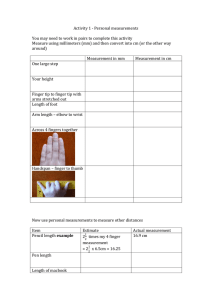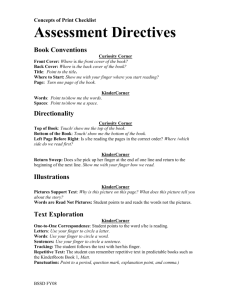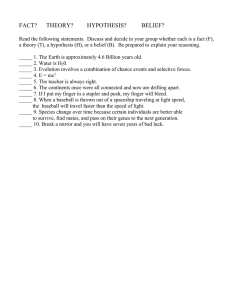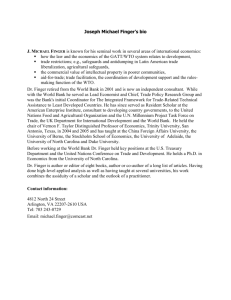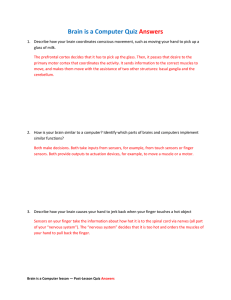INSTRUCTION SHEET: FINGER FRACTURE (NONDISPLACED)
advertisement
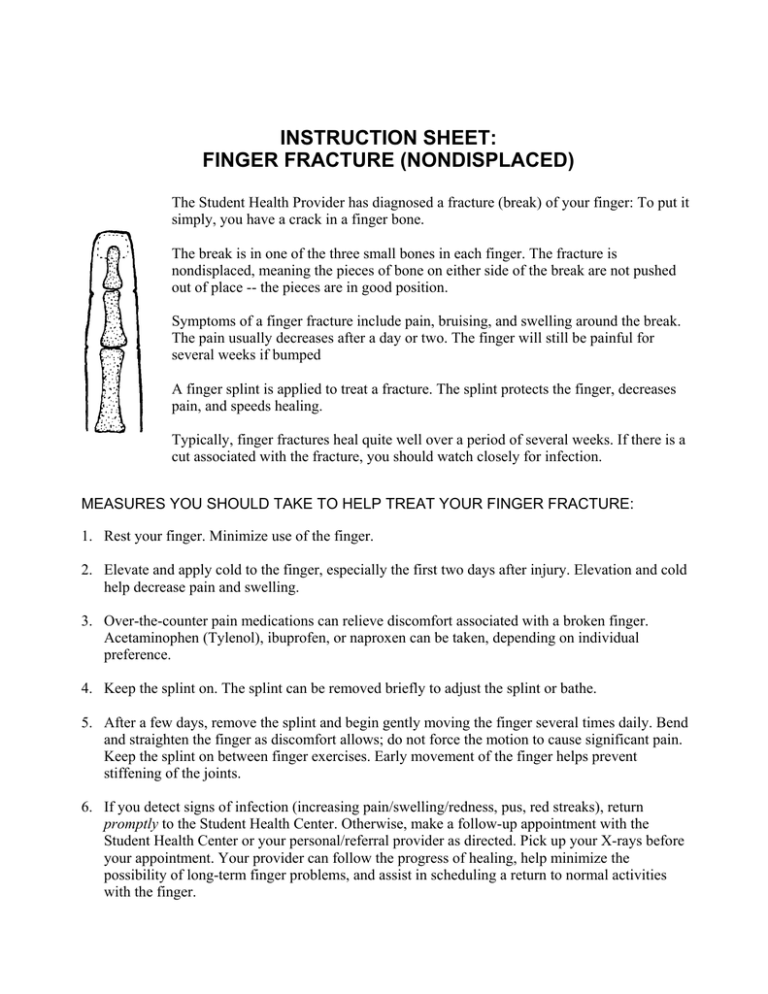
INSTRUCTION SHEET: FINGER FRACTURE (NONDISPLACED) The Student Health Provider has diagnosed a fracture (break) of your finger: To put it simply, you have a crack in a finger bone. The break is in one of the three small bones in each finger. The fracture is nondisplaced, meaning the pieces of bone on either side of the break are not pushed out of place -- the pieces are in good position. Symptoms of a finger fracture include pain, bruising, and swelling around the break. The pain usually decreases after a day or two. The finger will still be painful for several weeks if bumped A finger splint is applied to treat a fracture. The splint protects the finger, decreases pain, and speeds healing. Typically, finger fractures heal quite well over a period of several weeks. If there is a cut associated with the fracture, you should watch closely for infection. MEASURES YOU SHOULD TAKE TO HELP TREAT YOUR FINGER FRACTURE: 1. Rest your finger. Minimize use of the finger. 2. Elevate and apply cold to the finger, especially the first two days after injury. Elevation and cold help decrease pain and swelling. 3. Over-the-counter pain medications can relieve discomfort associated with a broken finger. Acetaminophen (Tylenol), ibuprofen, or naproxen can be taken, depending on individual preference. 4. Keep the splint on. The splint can be removed briefly to adjust the splint or bathe. 5. After a few days, remove the splint and begin gently moving the finger several times daily. Bend and straighten the finger as discomfort allows; do not force the motion to cause significant pain. Keep the splint on between finger exercises. Early movement of the finger helps prevent stiffening of the joints. 6. If you detect signs of infection (increasing pain/swelling/redness, pus, red streaks), return promptly to the Student Health Center. Otherwise, make a follow-up appointment with the Student Health Center or your personal/referral provider as directed. Pick up your X-rays before your appointment. Your provider can follow the progress of healing, help minimize the possibility of long-term finger problems, and assist in scheduling a return to normal activities with the finger.



